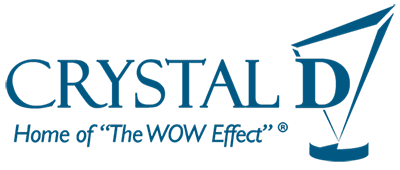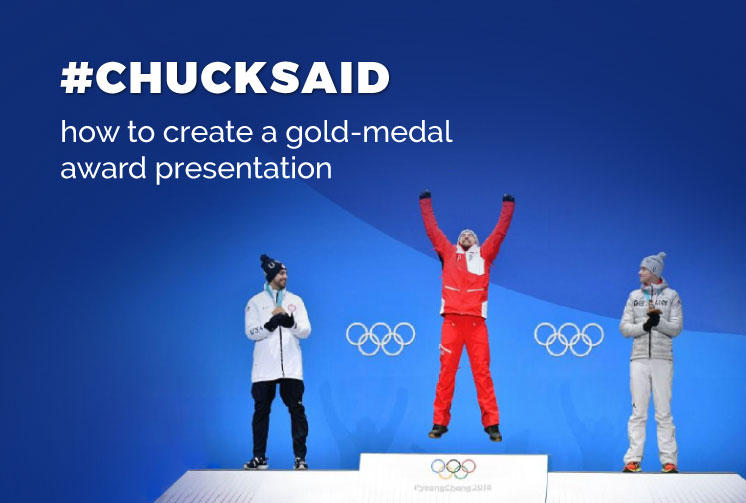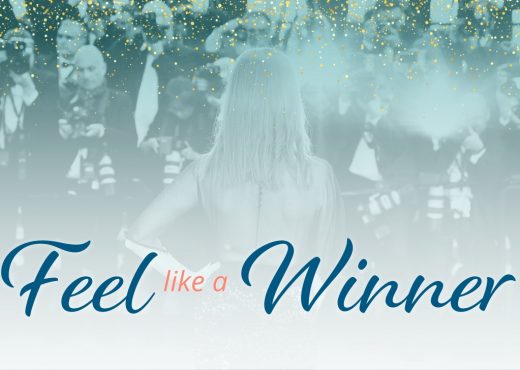The 2018 Olympics recently wrapped up. I love the Olympics. I tried to watch as much as I could. My favorite part is watching one winner after the next receive their prized gold medal. I try to imagine what that moment must feel like for the winner, standing in front of thousands of people who celebrate my victory. What a rush! Can you even imagine?
I watched the winners bow their heads slightly to receive their medals, then look up and wave at their adoring fans. This moment of recognition is executed flawlessly. The people that organize the Olympics make presenting an award look easy. But, I assure you, planning and executing a once-in-a-lifetime award experience is not as easy as it looks.
I have been giving awards to my employees for 14 years. That totals roughly 140 award presentations throughout my career. Most presentations went well while others have gone terribly. I have learned the hard way that there is a certain technique to presenting an award. There is a way to connect with the winner on stage in an authentic way; saying the right thing at the right time. I have discovered that it takes both authenticity and practice to make a gold-medal award presentation.
I want your award presentations to be meaningful and effective. So I will share with you what I’ve learned – here’s WHAT TO DO and WHAT NOT TO DO.WHAT TO DO
First, choose the best presenter for the award you plan to give.
As a rule of thumb, the presenter should be the highest-ranking manager who personally knows the employee and their role in the organization. This person will need to do a bit of preparation.
Presenters should begin by learning about the significance of the award.
- Why is this particular award an important accomplishment?
- How does the winner and their contributions make the organization better?
- Does the award embody any corporate symbolism? If so, how can this be integrated into the presentation?
- How does this award reinforce the values or goals of the organization?
Next, presenters should learn even more about the recipient.
- What is their role at work?
- What did they specifically do to earn this award?
- How did the winner’s contributions directly help their team or department or organization?
- How do you think winning this award will make the recipient feel?
Then the presenter will need to formulate talking points for the actual award presentation based on what they’ve learned. Summarize and add details to make the words you use honor the recipient. Here is the framework that I use. Make sure to fill in these blanks:
- I saw what you did…
- I appreciate it…
- Here’s why it is important…
I add in personal comments or sentiments as it is appropriate.
The final step for a presenter is rehearse, rehearse, and rehearse some more. Presenters do best when they can get on the stage or platform and practice their lines so that transitions are natural, stories are sincere, and congratulations are authentic. The ability to connect sincerely with the winner is paramount.
What I’ve described above is the framework and preparation that I use when I get ready for a presentation. Here is a video example from the most recent WOW Day. In this video, I give Jake the Value Champion Award for Commitment. Jake receives this award for embodying our commitment value and being “dedicated to the ongoing viability of the company.” I add my sentiments and finish with a heartfelt congratulations.
Award presentations that are sincere and received with gratitude are thrilling! I love giving awards to deserving people. It is one of the biggest joys in my life! Today I know what to do to make a home run presentation, but it wasn’t always like that. I mentioned that I learned some things the hard way by doing them incorrectly the first time. Here is a short list of WHAT NOT TO DO.
WHAT NOT TO DO
- Don’t wing it; be prepared.
- Don’t loaf around on stage; stand tall and be proud of the winner.
- Don’t be smug or overly serious when you speak. Instead, smile at the audience and winner.
- Don’t lean in for an awkward side-hug; shake the winner’s hand and look them straight in the eye.
You can use the information I have here to craft your own gold-medal moment of recognition – just like in the Olympics. I wish you the very best in all of your awards presentations. I’d love to hear about your recognition experiences. What framework works best for you? What doesn’t work?
Let me know in the comments below!





No Comments